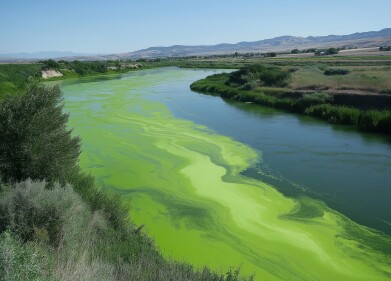Environmental laboratory
Potential Underwater Europa Rover Being Groomed by NASA
Aug 02 2015
American space giants NASA have revealed that they are currently testing out an underwater rover in an aquarium in Los Angeles, with a view to one day flying the machine to Europa, the fourth largest moon of Jupiter.
Once the probe lands on Europa, which is slightly smaller than our own moon, it will be sent underneath the surface of the vast ocean to search for signs of life. Scientists estimate that Europa’s unique positioning and circumstances make it one of the most viable possibilities for extra-terrestrial life in our solar system.
Humble Beginnings
The probe has spent the last few months being tested at the Californian aquarium, where it was placed into a tank with ice-covered water. After a hole was drilled in the top of the ice, the rover was dropped inside and then controlled remotely by a team at the NASA Jet Propulsion Laboratory (JPL).
The project was overseen by Andy Klesh, principal investigator for the rover and volunteer diver at the nearby science centre. It is the first time that a vehicle had been remotely operated using satellite while underneath ice, said Klesh. The potential of it to gather data could be invaluable, on our planet as well as out in space.
Previously inaccessible regions of the Arctic and Antarctica could now be explored using the probe. Due to their high levels of frozen water and the difficulty of reaching such sites, any addition to our water quality research in the Arctic and to our knowledge of the life living beneath the ice sheets would be most welcome.
To Europa and Beyond
Klesh is optimistic that the same technology which is effective at exploring extreme climes here on Earth could be used in space, as well. “A lot of what we do in deep space is applicable to the ocean,” explained Klesh. “This is an early prototype for vehicles that could one day go to Europa and other planetary bodies with a liquid ocean covered by ice. It’s ideal for traveling under the ice shelf of an icy world.”
Klesh’s co-worker on the project, Kevin Hand, was equally positive about the chances of using the rover to explore intergalactic territory, as well. “Our work aims to build a bridge between exploring extreme environments in our own ocean and the exploration of distant, potentially habitable oceans elsewhere in the solar system,” said Hand.
Of course, such an undertaking is obviously still many years away from realisation. The mere fact that NASA has announced such a project is encouraging, however, as it demonstrates that if there is life on other planets and celestial bodies, finding it might not be quite as out of reach as it once seemed.
Digital Edition
AET 28.4 Oct/Nov 2024
November 2024
Gas Detection - Go from lagging to leading: why investment in gas detection makes sense Air Monitoring - Swirl and vortex meters will aid green hydrogen production - Beyond the Stack: Emi...
View all digital editions
Events
Jan 12 2025 Abu Dhabi, UAE
Jan 14 2025 Abu Dhabi, UAE
Jan 20 2025 San Diego, CA, USA
Carrefour des Gestions Locales de L'eau
Jan 22 2025 Rennes, France
Safety, Health & Wellbeing LIVE
Jan 22 2025 Manchester, UK



















